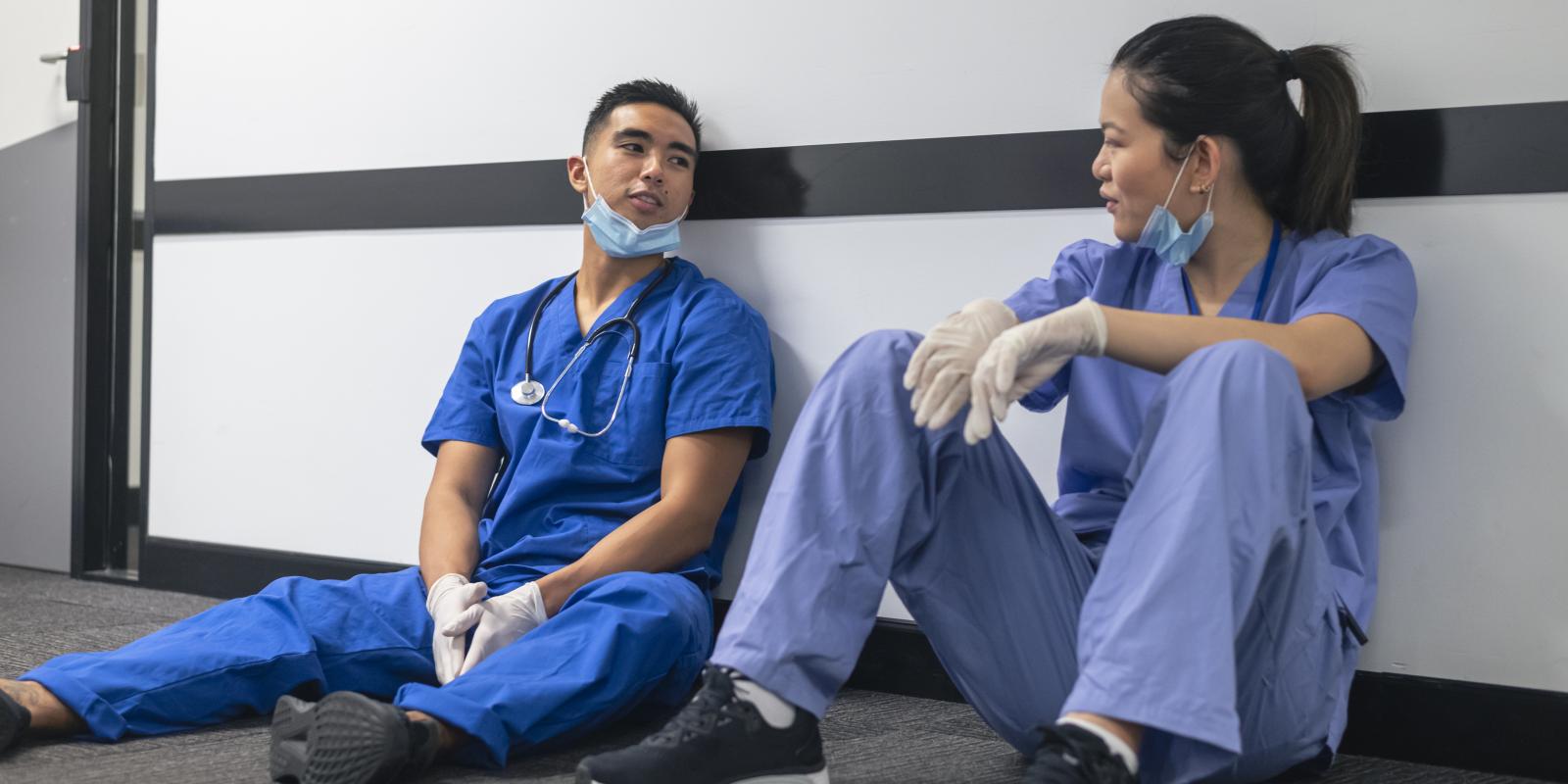Healthcare professionals have worked compassionately through an unimaginable past two years. For many, burnout is high. One finding that has emerged: working together helps to reduce healthcare professional fatigue. Especially among those treating older adults, proactive communication between staff was found to be critical in transitioning care of older adults.
Already healthcare professionals are united by a common purpose: serving the patient. So, when stress is high, checking in with fellow staff can be very beneficial. New resources are available from the Abbott Nutrition Health Institute to help learn the signs and symptoms of compassion fatigue, stress and burnout. Also there are concrete strategies for strengthening resiliency and how to contribute to a culture of compassion among colleagues.
Integral to compassion and working together is interprofessional collaboration, which can improve resiliency and combat compassion fatigue, stress and burnout. The World Health Organization (WHO) calls this essential to the future of healthcare. It envisions healthcare evolving to include more communication, with old and new tasks shared among professionals. Students trained using an interprofessional education model are more likely to become collaborative team players, and work together toward improving patient outcomes.
‘Students trained using an interprofessional education model are more likely to become collaborative team players.’
Interprofessional collaboration means communication with one another, with patients and their families, and with the broader community in a transparent, collaborative and responsible way. Training programs and simulations are shown to be effective tools for building a collaborative culture. Practicing what was learned was the single best predictor of improved communication.
how best to foster good working relationships and a collaborative, compassionate culture?
The Robert Wood Johnson Foundation defines culture as a collection of behaviors that together are the “way things get done around here.” Establishing new behaviors so they can be strengthened over time requires two things: practice of the desired behavior; and support and structure that makes the behavior second nature.
Desired behaviors can include:
- Actively listening and paying attention to non-verbal cues
- Being concise and clear
- Being personable and empathetic
- Giving and receiving feedback
- Checking in to see that the team has reached a shared understanding (e.g., of the treatment plan)
- Deciding whether discussion, debate, consultation or other communication tools will help
- Effectively using communication technology (e.g., secure messaging apps, paging)
Most people recognize such common behaviors they and their coworkers often perform. Upon reflection, these actions can help to bring people together and feel supported. By building a framework around these behaviors at every level, a nonjudgmental environment is created. The administration can support this through human resource systems, budgets and leaders putting together complementary teams.
At a policy level, governments and agencies can provide structure to gather evidence on the efficacy of trainings, monitor health outcomes, provide program accreditation, and research how to effectively collaborate in diverse communities and settings. They can provide funding for trainings and secure sharing of current and accurate information needed to support trainings in diverse settings.
Ultimately, success may depend upon understanding and addressing communication barriers. Differences in training and backgrounds can lead to differences in communication styles. As a result, communication can be hindered by team members feeling misunderstood or feeling that their opinion is not valued or understood. Teams with professionals from diverse backgrounds can be more successful, and as silos break down, tasks can be shared among professionals to create a more united healthcare system.
In starting this new year, look for opportunities to learn more about colleagues, identify how to contribute to building a culture of compassion, and most importantly, find more ways to be kind to oneself.
For additional healthcare professional education programs and resources, visit https://anhi.org/.
Ashley Bronston, MS, RDN, LDN, is an associate program manager at Abbott Nutrition Health Institute in Columbus, OH













